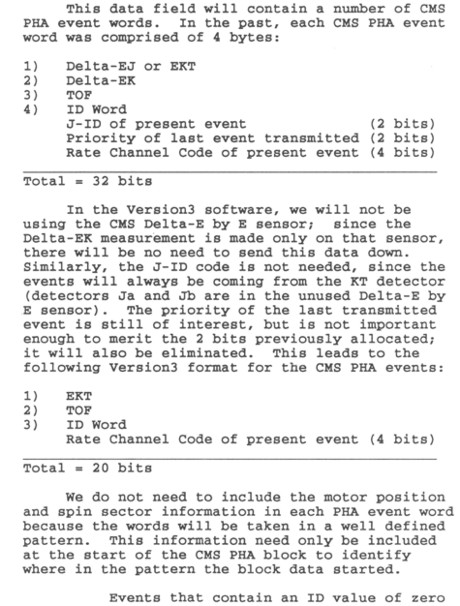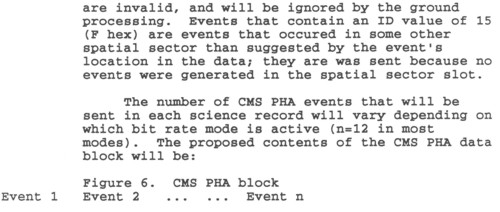The Galileo Energetic Particles Detector
Galileo EPD Handbook
Chapter 2. EPD Software
EPD SBAND Mission Software Requirements (continued)
Source: S. Jaskulek, various dates
CDS-Produced EPD Telemetry Record (continued)
SUBCOM CONTROL
The original EPD software reported 91 separate subcommutated parameters (including some spares). A list of these parameters is shown in Table 15. In the Realtime Mode, the low telemetry rates require us to reduce the number and reporting frequency of the subcommutated channels. To offset these restrictions somewhat, several new features have been added to the subcom software.
In normal operation, a single subcom value will be reported each science record. The value reported will be selected from a list of subcom channels, defined by an uploadable table in the EPD memory. The channel index will rotate through this list, moving once per science record. While this approach will eventually read out all the important subcom channels, it provides very poor temporal resolution for debugging, trend analysis, etc.
To address this problem, a newly added command function will be able to set the subcom index to any one of the subcom channels in the RT list. As a separate option, the same command may also be used to freeze the index on a specific channel (or resume normal channel rotation).
It is often desirable to obtain a "snapshot" of all the subcom channels from the same time period. As another new feature, the subcom software will generate and maintain a 91-byte buffer in the EPD memory containing the most recently read value for each subcom channel (including those that are not normally sent down in the Realtime Mode).
This "snapshot" subcom list will be located in the EPD memory starting at address 1EDD (hex), and can be accessed by the spacecraft via a sequenced MRO (memory readout). It should be noted that this feature is not available during Record Mode operations, because the address space will be used to store LEMMS PHA spectra at such times.
CMS PHA Events


Next: New EPD Software Tasks
Return to Galileo EPD Handbook Table of Contents Page.
Return to main
Galileo Table of Contents Page.
Return to Fundamental
Technologies Home Page.
Updated 8/23/19, Cameron Crane
QUICK FACTS
Mission Duration: Galileo was planned to have a mission duration of around 8 years, but was kept in operation for 13 years, 11 months, and 3 days, until it was destroyed in a controlled impact with Jupiter on September 21, 2003.
Destination: Galileo's destination was Jupiter and its moons, which it orbitted for 7 years, 9 months, and 13 days.



